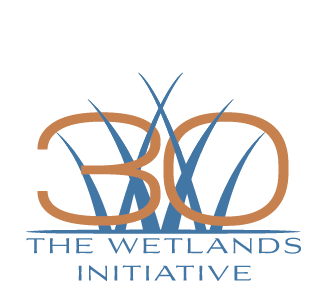Last month, Spring got a jumpstart at the Dixon Waterfowl Refuge— and at Square Marsh in the Calumet region, where TWI conducts restoration efforts—thanks to a series of prescribed burns. TWI ecologists and restoration technicians took to the fields to burn over 400 acres at the sites over three days. While fire may not be the first thing that comes to mind when envisioning the needs of a wetland, when it comes to prescribed burning, fire represents opportunities for new life and abundant vegetation and wildlife!
TWI crew members conduct a burn at Square Marsh on March 11.
Why Use Prescribed Burns?
The prairies, wetlands, and woodlands of the Midwest evolved over millennia alongside periodic fires, which provide crucial benefits—from reducing shrubs and trees to make way for spring grasses and wildflowers, to encouraging the growth of fire-adapted keystone species like oak trees. People indigenous to the region began applying fire to the landscape thousands of years ago, mimicking natural occurrences of fire while shaping the surrounding ecosystem to increase resources like wild edible foods and game, such as deer and turkey.
When it comes to wetland restoration work, prescribed burns offer additional benefits. Fire helps suppress invasive species such as cattails and phragmites that proliferate in wetland habitats, allowing native plants the space and sunlight they need to thrive. Fire also clears dense thatch to promote habitat needed by birds, reptiles, and mammals that rely on wetlands.
Steps of a Prescribed Burn at TWI
1. Planning the burn unit: Crew members first mark the area to be burned and create control lines, called burn breaks, to contain the fire within a boundary.
2. Lighting the fire: The burn is ignited using a drip torch containing a mix of gasoline and diesel fuel, and matches or a lighter.
3. Managing the flames: Crew members stay onsite throughout the burn to manage and monitor the fire. Unlike western parts of the country, where relative humidity is lower and brush is more abundant, the possibility of a prescribed fire spreading outside of the burn unit is low in our region.
4. Assisting regrowth: Following a prescribed burn, crews may treat remaining invasive plants with herbicide and/or plant native seeds or seedlings. Within weeks or months, the wetland is bursting to life with vegetation!
If you’d like to join us in planting native seedlings at a recently burned area of the Dixon Waterfowl Refuge, check out our upcoming volunteer event on May 15th.






